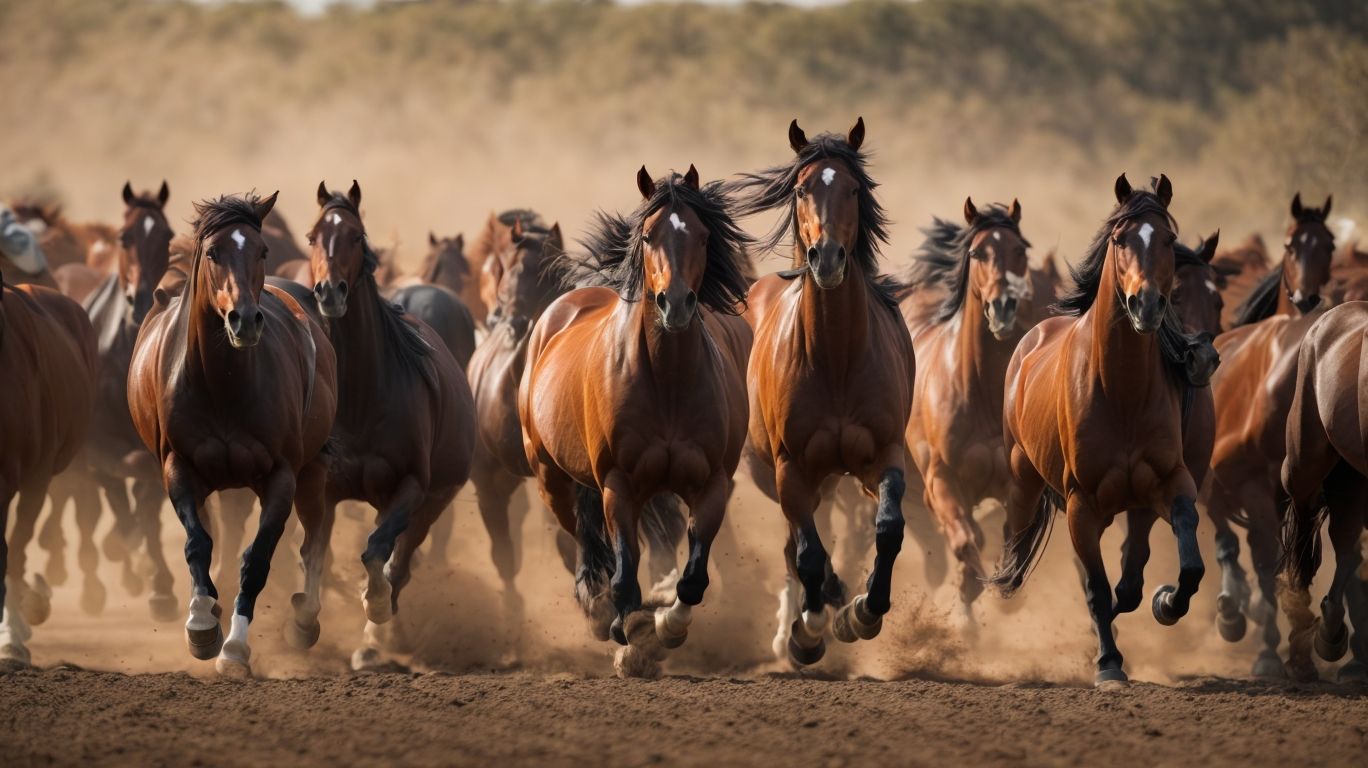Horse behavior management and understanding the social dynamics within horse herds are crucial aspects of horse care and handling. By delving into the intricacies of horse social behavior, herd structures, communication, and effective management techniques, horse owners and enthusiasts can create a harmonious environment for their equine companions.
In order to comprehend horse behavior within herds, it is important to study the social dynamics and hierarchies horses establish. Understanding the pecking order, the role of the dominant horse, and how horse herds form and interact can help horse owners better manage their horses’ social needs.
Equally important is understanding horse communication and body language. Horses use various vocalizations, facial expressions, gestures, and body postures to convey their intentions and emotions. By becoming familiar with these forms of communication, horse owners can better interpret their horses’ needs and respond appropriately.
Managing horse social interactions involves providing adequate space and facilities to accommodate their natural herd instincts. This includes ensuring enough room for horses to move freely and establishing proper feeding and watering areas. Preventing and resolving conflicts within the herd and safely introducing new horses to an established group are crucial for maintaining a peaceful and cohesive herd dynamic.
By studying and implementing effective horse behavior management techniques and understanding the social dynamics within horse herds, horse owners can establish a positive and balanced environment that promotes the overall well-being and welfare of their horses.
Key takeaways:
Key takeaway:
- Understanding horse social behavior: It is important for horse owners and handlers to understand the social dynamics in horse herds in order to effectively manage horse behavior and promote positive interactions.
- The role of the dominant horse: The dominant horse in a herd plays a vital role in maintaining order and hierarchy. Understanding this role can aid in managing social interactions and preventing conflicts within a horse herd.
- Managing horse socialization: Providing adequate space and facilities, preventing and resolving conflicts, and introducing new horses properly can ensure a healthy and harmonious socialization within horse herds.
Horse Behavior Management
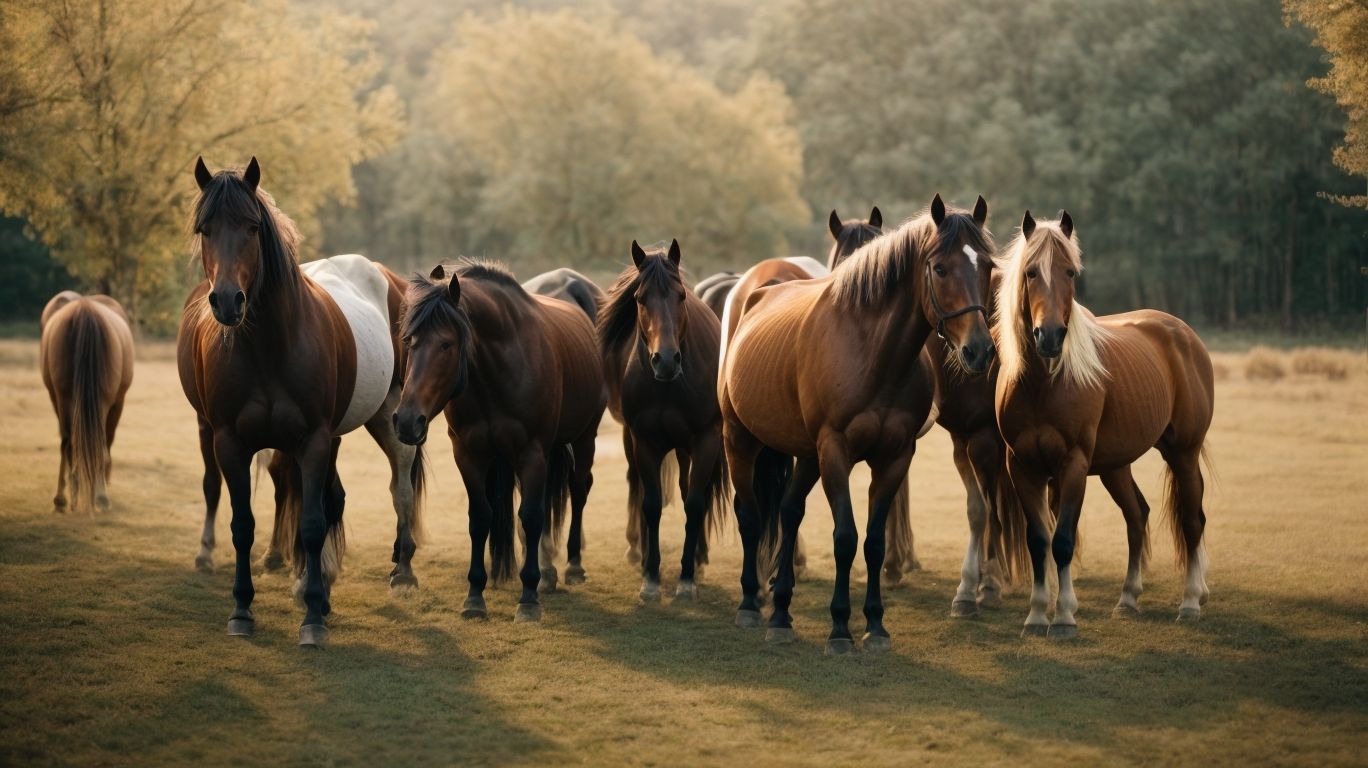
Photo Credits: Www.Horsespeakeducation.Com by Henry Mitchell
When it comes to horse behavior management, the understanding of social dynamics within horse herds is crucial. Here are some key considerations for effectively managing horse behavior:
1. Establishing a Hierarchical Structure: Horses naturally create hierarchies within their groups, consisting of dominant and submissive individuals. Having knowledge about this pecking order will help prevent conflicts and maintain a harmonious herd.
2. Providing Adequate Space: Horses require sufficient space to freely move and interact. Overcrowding can result in stress, aggression, and unhealthy behaviors. It is recommended to aim for at least one to two acres of grazing area per horse.
3. Ensuring Balanced Nutrition: Proper nutrition plays a vital role in horse behavior management. Offering a well-balanced diet that meets their nutritional needs contributes to their overall well-being and helps prevent behavioral issues.
4. Encouraging Socialization: Horses are social animals and need companionship. Allowing opportunities for herd interaction, such as group turnout or pasture mates, can alleviate boredom and reduce negative behaviors.
5. Regular Exercise and Mental Stimulation: For preventing frustration and restlessness, horses require regular exercise and mental stimulation. Daily turnout, structured training, and engaging activities can fulfill their physical and mental needs.
By incorporating these principles of horse behavior management, you can create a positive and thriving environment for your horses.
Social Dynamics in Horse Herds
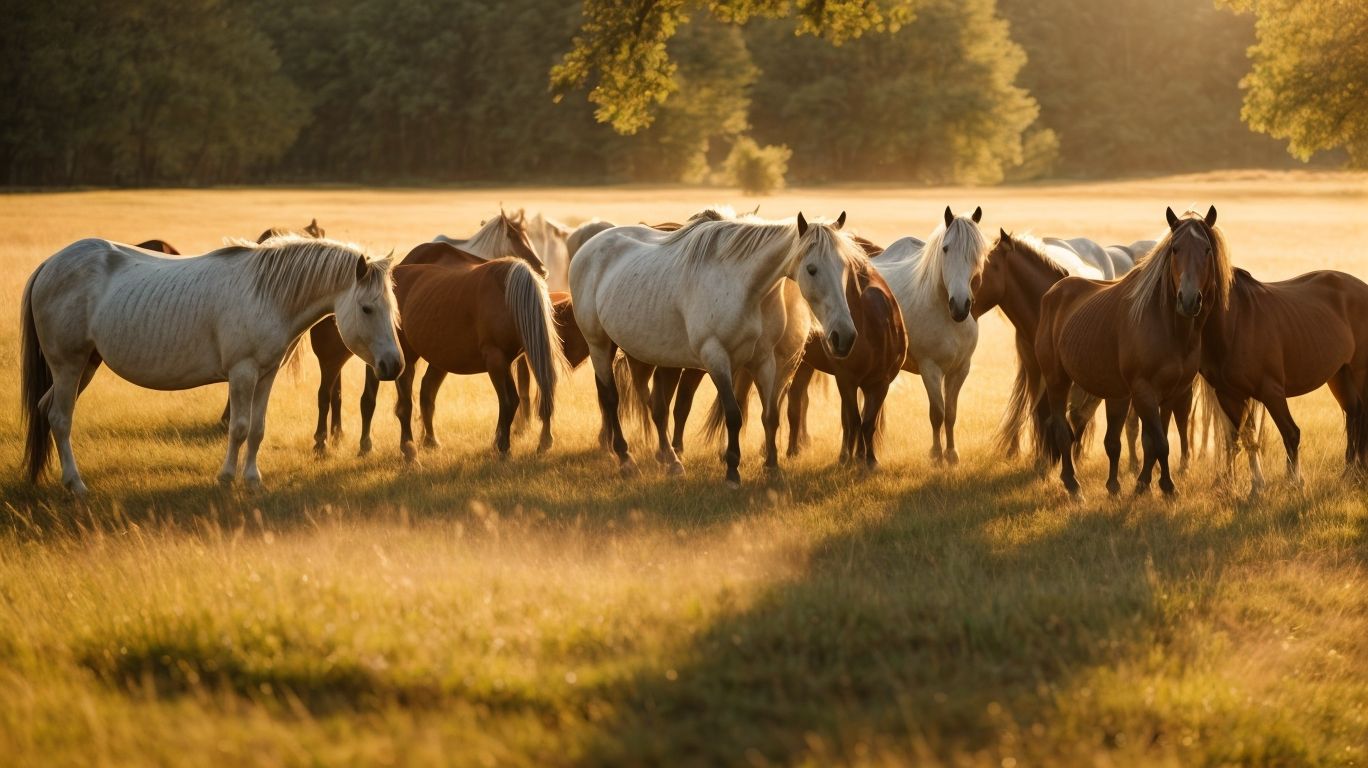
Photo Credits: Www.Horsespeakeducation.Com by Paul Hernandez
Have you ever wondered about the intricate social dynamics within horse herds? In this section, we’ll explore the fascinating realm of horse social behavior. From understanding their complex interactions to the importance of socialization in horse herds, we’ll uncover the captivating insights that shed light on how these majestic creatures navigate their social environments. So, grab your saddle and join us as we delve into the captivating world of horse herd dynamics.
Understanding Horse Social Behavior
Understanding horse social behavior is essential for horse owners and handlers. Horses are social animals and have a complex hierarchy within their herds. They use various forms of communication, such as vocalizations, facial expressions, and body language, to interact with each other. It is important to provide adequate space and facilities for horses to allow for proper socialization. When introducing new horses to an established herd, it is crucial to do so gradually and carefully to minimize conflicts. By understanding horse social behavior, horse owners can foster a harmonious and healthy herd dynamic. Pro-tip: Spend time observing your horses’ interactions to gain a deeper understanding of their social behavior.
The Importance of Socialization in Horse Herds
The Importance of Socialization in Horse Herds
Socialization in horse herds is of utmost importance for their overall well-being and development. It plays a vital role in helping horses establish and maintain social bonds, build trust, and learn important behaviors from one another. Here are some key points that highlight the significance of socialization within horse herds:
- Promotes natural behavior: Socialization allows horses to engage in natural herd behaviors, such as grooming, playing, and mutual protection.
- Enhances communication skills: Through socialization, horses learn to effectively communicate using body language, vocalizations, and facial expressions.
- Develops social hierarchy: Interactions within the herd establish a social hierarchy, providing stability and reducing conflicts in the group.
- Improves mental and emotional well-being: Socialization reduces stress and boredom, resulting in a positive state of mind for horses.
- Facilitates learning: Young horses observe and imitate older herd members during socialization, learning crucial skills like grazing, drinking, and staying safe.
Fact: Horses form long-lasting social bonds and display remarkable loyalty and empathy towards their herd mates.
Horse Herd Structures
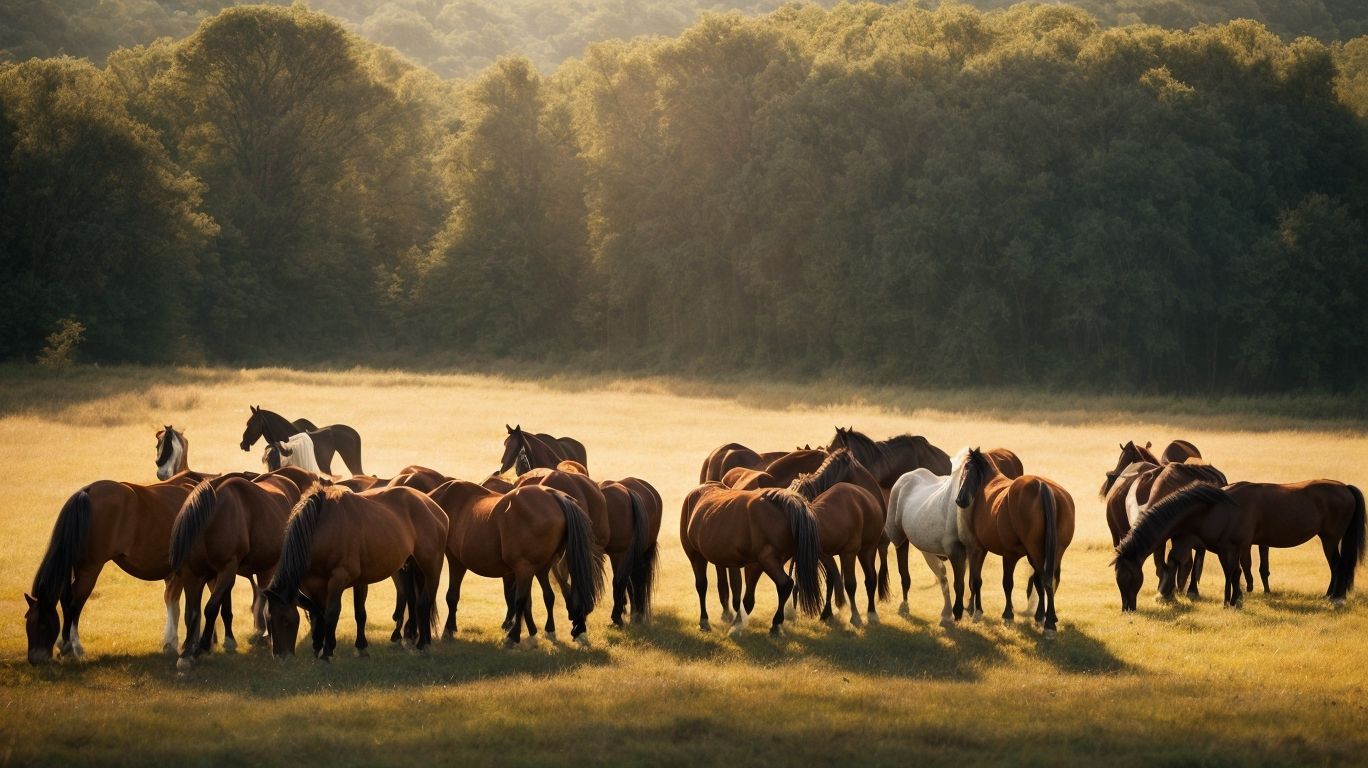
Photo Credits: Www.Horsespeakeducation.Com by Jonathan Taylor
Unraveling the dynamics of horse herds – from the role of the dominant horse to the intricate hierarchy and pecking order within the group, and the formation and composition of these fascinating equine communities. Join us as we delve into the social dynamics of horse herds, shedding light on their complex social interactions and offering insights into the inner workings of these magnificent creatures.
The Role of the Dominant Horse in a Herd
The Role of the Dominant Horse in a Herd
The dominant horse plays a crucial role in a herd. They are the leader and have the highest social status. The dominant horse determines the group’s behavior and decides when to move, eat, or rest. They also maintain order and resolve conflicts within the herd. Other horses in the group look to the dominant horse for guidance and protection. The dominant horse uses their body language and vocalizations to assert their authority. It is important for horse owners to understand and respect the role of the dominant horse in a herd to ensure a harmonious and balanced herd dynamic.
Fun Fact: The dominant horse is not necessarily the largest or strongest, but rather the one that can effectively communicate and establish their leadership.
Hierarchy and Pecking Order in Horse Herds
In horse herds, hierarchy and the establishment of a pecking order play crucial roles in maintaining social order and minimizing conflicts. The hierarchy and pecking order in horse herds are determined by factors such as age, strength, and dominance. The dominant horse occupies the highest position in the hierarchy and has priority access to resources. Other members of the herd have clear positions relative to the dominant horse, thus creating a pecking order that ensures smoother interactions within the herd and helps minimize aggression. Understanding and respecting the hierarchy and pecking order is essential when managing and interacting with horses in a herd setting.
Formation and Composition of Horse Herds
In the process of the formation and composition of horse herds, several factors come into play. Horses naturally create social groups known as herds, which consist of a dominant horse, subordinate horses, and other members. The dominant horse plays a leadership role and establishes the hierarchy within the herd. The composition of a herd can vary in size, with larger herds typically including multiple mares, a stallion, and their offspring. When introducing new horses to a herd, it is important to have proper management and supervision to ensure a smooth integration. By comprehending the dynamics and social behavior of horses, owners can establish a harmonious and well-balanced herd environment.
Horse Communication and Body Language
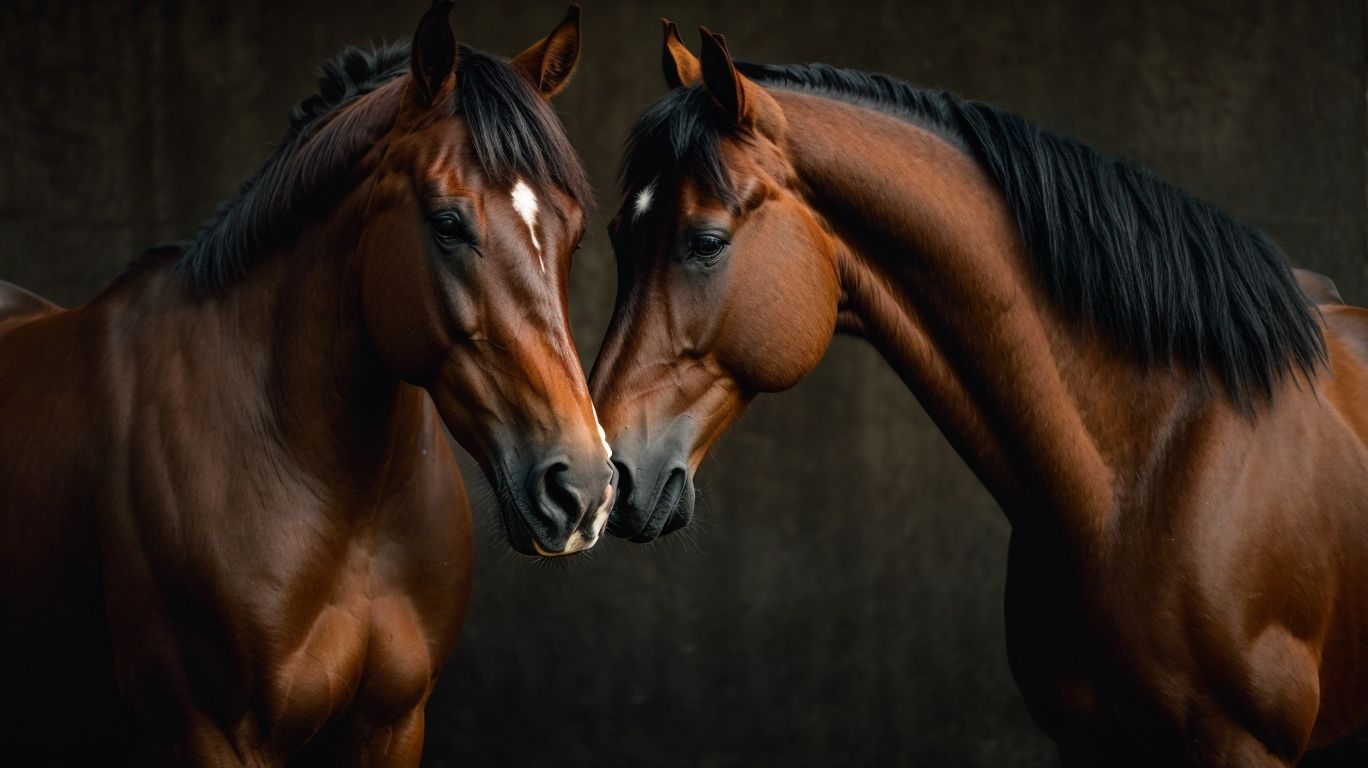
Photo Credits: Www.Horsespeakeducation.Com by Juan Mitchell
Discover the fascinating world of horse communication and body language. In this section, we’ll unravel the intricate web of interactions among horses through their vocalizations, facial expressions, gestures, and body postures. Uncover the hidden meanings behind their whinnies and nickers, decipher the language of their nuanced facial expressions, and decode the messages conveyed through their intricate body postures and signals. Get ready to delve into the captivating realm of horse dynamics and understand their social communication like never before.
Horse Vocalizations and their Meanings
Horses communicate through a variety of vocalizations, each with its own meaning. These vocalizations, known as horse vocalizations and their meanings, are an essential part of their social interactions and can convey emotions, intentions, and warnings. Here are some common horse vocalizations and their meanings:
| Neigh: | A loud, high-pitched sound that horses use to communicate over long distances. It can express excitement, loneliness, or a call for attention. |
|---|---|
| Whinny: | A softer, shorter version of the neigh, often used as a greeting or to locate other horses. |
| Snort: | A sharp exhale through the nostrils, indicating surprise or alertness. |
| Nicker: | A soft, low sound horses make to express affection, particularly towards familiar individuals or when anticipating food. |
True story: Once, while observing a herd of horses, I heard a loud neigh followed by a series of whinnies. It turned out that a young foal had wandered away and was calling for its mother. The mother horse responded with a reassuring nicker to let the foal know that she was nearby. This heartwarming interaction demonstrated how horse vocalizations play a vital role in their social bonds and communication.
Horse Facial Expressions and Gestures
Horse facial expressions and gestures are essential for their communication and social interactions. These non-verbal cues, known as horse facial expressions and gestures, are crucial in conveying emotions, intentions, and establishing dominance within the herd. Some commonly observed horse facial expressions include the following:
| Ears forward: | This position indicates interest and alertness in horses. |
|---|---|
| Ears flattened back: | When a horse’s ears are flattened back, it is displaying aggression or fear. |
| Soft eyes and relaxed mouth: | When horses have soft eyes and a relaxed mouth, it signifies contentment and ease. |
In addition to facial expressions, horses also use gestures like head tossing, snorting, and licking lips to convey messages regarding their mood or intent. Understanding these horse facial expressions and gestures is essential for horse owners and handlers as it helps them effectively communicate and bond with their equine companions.
Body Postures and Signals in Horse Communication
Body postures and signals play a vital role in horse communication. Horses utilize a range of physical cues to express their intentions, emotions, and social hierarchy within the herd. Some typical body postures include ears forward or backward, head held high or low, tail swishing, and body leaning. These postures serve as indications of aggression, submission, relaxation, or attentiveness. Additional signals encompass nuzzling, biting, kicking, and stomping. By comprehending these body postures and signals, horse owners and handlers can effectively interpret their horse’s behavior and respond accordingly. It is crucial to attentively observe the body language of horses to ensure their well-being and maintain safe interactions with them.
By closely observing body postures and signals in horse communication, horse owners can cultivate a deeper understanding of their horse’s needs and emotions, resulting in improved communication and a stronger bond between the horse and its handler.
Managing Horse Social Interactions
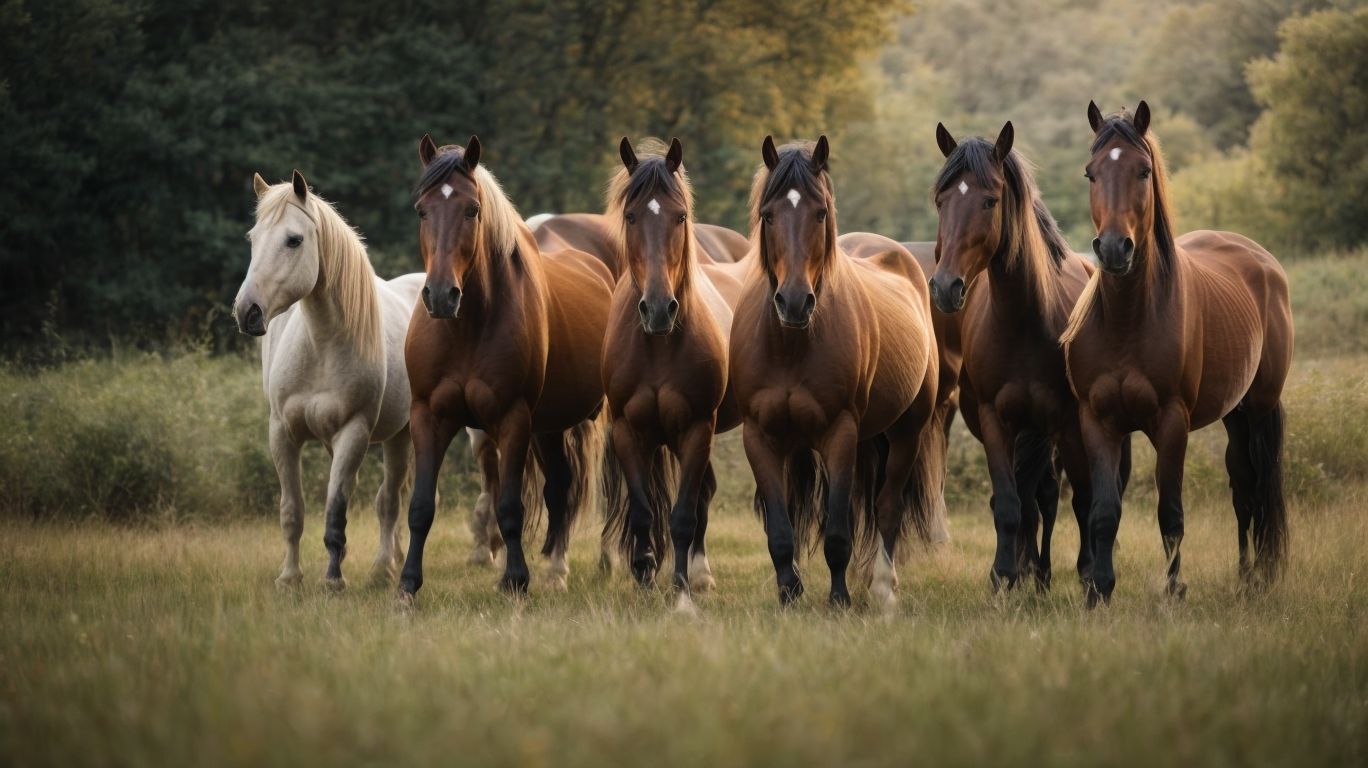
Photo Credits: Www.Horsespeakeducation.Com by Christopher Jackson
Managing the social interactions of horses is a crucial aspect of horse behavior management. In this section, we’ll explore various strategies to ensure harmonious dynamics within horse herds. Discover the importance of providing adequate space and facilities for horses, as well as effective ways to prevent and resolve conflicts within the herd. We’ll shed light on the art of introducing new horses to an established herd, fostering a smooth integration process. So let’s dive into the world of horse social dynamics and learn how to create a thriving equine community.
Providing Adequate Space and Facilities for Horses
When it comes to the health and well-being of horses, providing adequate space and facilities is of utmost importance. Consider the following factors:
- Horses require a generous size of pasture to roam and graze in. It is ideal to provide at least one to two acres per horse.
- Make sure to have a well-built stable or shelter available for horses to seek protection from extreme weather conditions.
- Remember to provide clean and fresh water at all times. It is important to have enough troughs or buckets for all the horses in the herd.
- Ensure the fencing is strong and secure to prevent horses from escaping and to keep them safe from any external threats.
- To stimulate natural behaviors, consider providing environmental enrichment such as scratching posts, toys, and turnout areas with varied terrain.
Fact: Are you aware that horses need to spend at least 60% of their time grazing in order to meet their nutritional needs? Therefore, it is crucial to provide them with ample grazing space for their overall health and happiness.
Preventing and Resolving Conflicts in Horse Herds
Preventing and resolving conflicts in horse herds requires careful management and understanding of horse behavior. Here are some steps to help horse owners and caretakers prevent and resolve conflicts in their herds:
- Regularly observe herd dynamics to identify any signs of tension or aggression.
- To minimize competition and reduce the likelihood of conflicts, provide ample space and resources, such as food, water, and shelter.
- For proper socialization and to minimize the risk of territorial disputes, gradually introduce new horses to the herd.
- Make sure each horse has their own personal space to retreat to when needed.
- Establish clear boundaries and maintain respect between horses by implementing appropriate training and handling techniques.
- If necessary, promptly and effectively address any aggressive behaviors and seek professional help.
By following these steps, horse owners and caretakers can promote harmony and safety within their herds.
Introducing New Horses to an Established Herd
When introducing new horses to an established herd, it’s important to follow a careful process to help minimize stress and promote a smooth integration. Here are some steps to consider:
- Set up a quarantine area to allow the new horse to acclimate and ensure they are healthy.
- Introduce horses gradually, starting with visual contact across a fence to allow for initial interactions.
- After a few days, allow the horses to interact in a smaller, neutral space to establish hierarchy and minimize aggression.
- Monitor the interactions closely and be prepared to separate horses if any aggressive behavior occurs.
- If all goes well, gradually increase the size of the pasture or paddock where the horses can interact.
Pro-tip: Provide plenty of food and water sources to prevent resource competition and give the horses a positive focus during the introduction process.
(Source: [Introducing New Horses to an Established Herd](https://www.thesprucepets.com/introducing-new-horses-to-an-established-herd-1886719))
Some Facts About Horse Behavior Management – Social Dynamics in Horse Herds:
- ✅ Horses are social creatures that need interaction with others for safety, affection, and play. (Source: Our Team)
- ✅ Horses communicate with each other through body language and live in groups called herds. (Source: Our Team)
- ✅ Each herd has a stallion to protect it and one or two lead mares to guide the group. (Source: Our Team)
- ✅ Horses establish a hierarchy or “pecking order” within the herd, with dominant horses at the top and submissive horses at the bottom. (Source: Our Team)
- ✅ Foals learn to interpret other horses’ body language for survival and learn cause and effect through interactions with other horses. (Source: Our Team)
Frequently Asked Questions
1. How do horses communicate within a herd?
Horses communicate within a herd through body language, which includes subtle gestures like flicking their ears or tails. They also use vocal sounds, hoof noises, and odors to convey messages to other herd members.
2. What is the role of the lead mare in a horse herd?
The lead mare, also known as the boss mare or alpha mare, plays a significant role in making daily herd decisions. She determines the right place for each member based on their temperaments and abilities, and she also disciplines those who behave in bullying or anti-social ways.
3. How does the hierarchy within a horse herd work?
Horses establish a hierarchy within the herd, with dominant horses at the top and submissive horses at the bottom. Dominant horses have access to valuable resources like food and water first, while others have to wait their turn. The hierarchy can change as horses age, and new members are integrated through displays of dominance and play fighting.
4. What can we learn from horses about managing social organizations?
Looking at horse herd dynamics reveals that herd behavior is governed by a “moveable hierarchy” and the consistent influence of lead mares. This challenges the dominant, hierarchal, and hard-fisted worldview often seen in human organizations. Horses demonstrate the importance of shared decision-making, understanding individual temperaments and abilities, and disciplining inappropriate behavior for a common purpose.
5. How do horses interact socially?
Horses are social creatures and engage in a range of social behaviors within their herds. These behaviors include mutual grooming, standing close to each other, and playful interactions. They also use subtle communication methods, such as flicking their ears or tails, to maintain harmonious interactions within the herd.
6. Why is understanding herd dynamics important for horse owners?
Understanding herd dynamics is essential for horse owners who want to provide their horses with outdoor social time. It helps owners recognize dominant and submissive behaviors within the group and ensures that horses can fulfill their natural social needs. By observing horse behaviors, owners can better care for their horses and create a more enriching environment for them.
